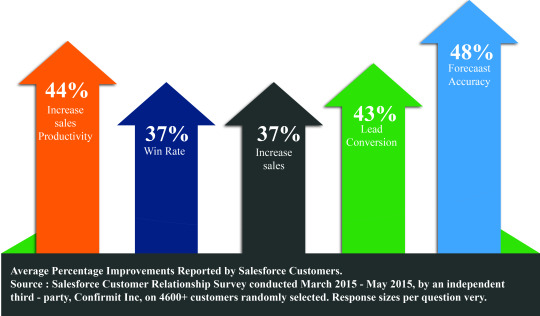Don't wanna be here? Send us removal request.
Video
vimeo
Integration
Integration & Migration #Solutions For #Salesforce & #HubSpot We Specialize in #Integration and #Migration #Consulting, #Planning, #Development & #Implementation
#Vimeo#salesforcecrmsolutions#crmforhighereducation#crmforhealthcare#crmforlifesciences#crmforfinancialservices#crmforfinancialservuces
0 notes
Video
youtube
Cetrix Cloud Services developed its solutions and services around the world’s best business and management software systems available. We are partners with Salesforce, IBM, Cloudera, Intel, Microsoft and more in order to offer a full spectrum of services to our clients.We have selected Salesforce as our premier CRM platform, Pardot and Hubspot for marketing automation for organizations and companies of all sizes, and devised implementation and support plans to make all this as affordable and accessible as possible to these organizations.To complement our services with data gathering, storage and analytics, we offer Salesforce Wave and Einstein, IBM Watson, Google Analytics and Cloudera Hadoop platform.With Salesforce at the core, we integrate various business software systems to create a consistent, connected and unified cloud-based business management system for SMEs and Startups in any sectors.
0 notes
Text
Get Granular: Insight into Lead Distribution
Sales have become much more precise because of innovative sales techniques and customer relations software. You want to sell your product to long term customers. To do so, you need to develop leads into customers. One of the first things to understand about finding customers is that you have developed a product that solves a problem. When you show customers how your product fulfills a need for them, you can convert them into long term customers. Getting your customers ready to listen to your sales pitch is called lead marketing. Before the customers buy your product, your sales team will move them through a sales process to prepare them. Your sales team works with qualified leads using a variety of techniques. Qualify your leads It’s important to clearly identify where your customers are in the sales process. So often, sales are lost when sales teams pass along unqualified leads. If, during the process, potential customers are given a readiness factor as they move along, everyone on your team can look at your salesforce software and track their progress. One way to track customer progress is to assign a number to each phase of the lead process. For example, the awareness phase (during which your customer finds out about your product) could be assigned the number 1 through however many sales levels you wish to create. Customers should work with salespeople throughout the buying process (also known as nurturing leads or building relationships) Push Sales Sales works either through customers finding your product or your salespeople finding your customers. Push sales start with customers learning about your product through your website, advertising, word of mouth, or a mailer. When customers find your website, you can easily track them after they sign up for your newsletter or informative whitepaper. This type of sales method relies on relationship building as visitors move towards becoming long term customers. Relationship building puts the human connection into the process. An interested potential customer needs to be nurtured because you want customers to feel like you solve a problem for them, guide them through implementation and training, then support them as they use your product. There are several well developed methods companies use to distribute leads to their sales people: Round Robin: this method entails distributing leads evenly among salespeople. Every person on your sales team will have leads to work with. This method gives everyone a chance to work with customers somewhat equally. However, bigger accounts or more difficult clients might need a more experienced salesperson. And not all salespeople know the product well, relate to customers well, or handle sales efficiently. Top Producer: each company usually has a salesperson or two who is great at working with customers. Some companies give more of their leads to the best salespeople. This technique works well for a manageable number of customers. But the difficulty with this method is the other salespeople do not have the opportunity to improve their sales techniques. Shotgun: this popular method entails dividing everyone into sales teams. Then leads are distributed to each team best suited to handle that type of lead. This puts leads in the hands of more specialized sales teams. The disadvantage with this method is that you may not have enough leads for each sales team or too few sales teams. Clearly Shotgun works well for larger companies who can train specialized teams. Region specific: some companies have sales teams assigned to each region where the company does business. This distribution method works well if each region has enough sales to support marketing and sales efforts. The downside to this method is some sales teams (or salespeople) may have much fewer sales opportunities than those covering areas where sales are more successful. Pull Sales Pull sales techniques involve putting effort into advertising so that customers want to buy your product before you contact them. The emphasis in this method of sales is designing an effective marketing campaign, then working with customers who have expressed an interest to buy your product. Blind pull: companies, using this method, give sales leads equally to each sales person. As with the round robin method, this technique relies on a sales team of equally skilled salespeople. This method does lead to a slower sales conversion rate because there is less incentive to outperform others on your sales team. Friendly competition encourages people to put in more effort. Cherry pick: this method involves offering the best customers to the fastest or most eager salespeople. Cherry picking can introduce competition and incentive for salespeople to be top producers. But if the person or people assigning leads aren’t handing out leads carefully, then less likely leads can be dropped. Following up on leads that are qualified rather than just an easy sale produces better sales results. Shark tank: sharks have a fierce nature, and this method involves fierce competition for sales leads. When each lead is handed out, salespeople try to grab it first. This technique may work in companies where sales happen quickly. However, some competition is not helpful. Overly rapid or aggressive behavior can hurt moral if some salespeople feel unable to compete or do well. Every so often, this method can introduce energy into the workplace but it does not work consistently. Hybrid Sales The best way to distribute leads is to use a combination of methods that work well for your company. Doing a little investigating will help your company use distribution techniques that fit your product and sales staff. Quick response An important part of any sales process is speed. Customers look for solutions to problems and if you don’t answer their questions quickly, they will look for solutions elsewhere. Distributing leads within minutes or hours (instead of days) allows salespeople to start nurturing relationships and answering questions. How to Qualify Leads.. At the beginning of this post, I mentioned it is important to qualify leads as part of the sales process. Sales leads need to be tracked to yield information about their progress. There are several methods companies use to find out if a lead would actually buy your product. One qualifying framework is FAINT which stands for funds, authority, interest, needs, and timing. After a lead is identified, a salesperson needs to determine if the lead could convert into a customer. A series of well-worded questions determines qualification: Funds: does the lead have money in the company budget to purchase your product? Authority: does the lead have decision making power in his or her company? Interest: does the company show actual interest in adding a product or replacing a current product with your product? Needs: does your product meet an actual need? (sales work best if the product solves a problem instead of just filling in a gap) Timing: is this a good time for the company to purchase and implement a new product? If your lead pass the FAINT test, salespeople can move him or her towards purchase. There are a number of effective questions that salespeople can use in the sales process and having a list of effective questions is a great way to train your team. Training Throughout this post, we have covered methods of assigning customers to team members in your company. But for this to work, you have to have trained salespeople! These 5 methods are great ways to train salespeople in how to work with your product and how to connect with customers: Offer e-learning such as training videos and educational software helps you teach salespeople about your product, how sales work best in your company, and how to work with others. Use regular training videos helps to keep knowledge fresh and create a learning environment at your workplace. Give regular rewards to thank employees for a job well done. This helps to keep employees motivated. Train on the job. The supervisor or boss should regularly look in on sales techniques and other work practices to give guidance and encouragement. Share success stories to demonstrate how well the company can do when great practices are used. How to Best use CRM software Once leads are determined to be good prospects, your salespeople should track each customer and the progress of that sale. The best way to do that is to use quality software that allows salespeople to input customer information, refer to it, and analyze it. Cetrix Salesforce software can improve your sales process.
0 notes
Text
How to Perform Customer Research for Marketing Automation Segmentation
Customer research can give businesses the tools to accurately segment their target audiences. It can also help businesses decide if their current marketing automation segments should be altered. At the crux, audience segmentation is the process of dividing your audience into smaller clusters with similarities. For example, you may learn it is best to advertise to younger audience members through social media, whereas it may be more effective to send traditional hardcopy advertisements to your older customers. Segmentation can be based on demographics (i.e. age and gender), psychographics (i.e. personality and motivations), region, and many other variables. Audience segmentation is important for ensuring that the right products enter the hands of the right customers. Therefore, it is crucial to understand the best ways to perform customer research. As seen below, there exists much room for improvement among B2B businesses. Only 6% have rated their use of content marketing as very effective, and performing customer research may likely increase marketing automation segmentation accuracy. There are various types of customer research your market can perform. These include primary research, secondary research, and the collection and analysis of data. Customer service management and market research are also useful tools for improving audience segmentation, and they will be discussed in greater detail below. Primary Research “Primary research is research that is collected firsthand rather than found in a book, database, or journal” (Lowe, 2012). In other words, primary customer research is information that is collected by working hands on either directly with customers or directly with customer information. For example, your business may conduct interviews, surveys, or questionnaires to learn about customer preferences. In this case, you are hearing directly from the customer, and can study the information you receive from them. Another way businesses can conduct primary research to learn more about customer segmentation is analyzing sales trends and the efficacy of current operations. Observing positive or negative trends in sales can expose information about customer preferences. Additionally, revealing marketing inefficiencies can help your business segment to the correct customers with more precision. Primary research may seem intimidating, and it certainly comes with its costs. However, to get started, it is important to ask yourself the following questions: How will this research improve my audience segmentation? How will my business be benefitted overall? What do I want to discover from this research? How much am I willing to spend on this research? Above all, it is important to have a solid plan in place for this research. The best primary research is concise, direct, and distributed in a timely manner. Secondary Research Rather than primary research, you may find it more appropriate to conduct secondary research. Secondary research “involves gathering existing data that has already been produced. For example, researching the internet, newspapers and company reports” (“GCSE,” n.d.). Secondary research is especially useful for businesses who cannot easily interact with their customers. This form of research is usually also easier, cheaper, and timelier. It can take many months to collect primary research directly from customers. However, there are thousands of pertinent articles, journals, and statistics available at this moment regarding marketing strategy. Primary research may be more appropriate for specific situations, and in many cases, hearing directly from your customers is better than researching them indirectly. Nonetheless, secondary research is a valuable tool that can be used effectively to improve marketing automation segmentation. Secondary customer research may include reviewing published statistics for similar companies regarding how they segment their audiences. It also may include researching academic journals to learn to best strategies for marketing automation segmentation. While secondary research is important, only conducting secondary research without primary research as well will likely not be enough to fully learn about how to better segment your audience. There are benefits to both conducting primary research and conducting secondary research. The best type of research for your business will depend on your business model, resources, and type of audiences. However, in most cases, a blend of both is optimal for improving marketing automation segmentation. Data Collection Another simple form of research your business can perform is data collection. At the core, data collection is dire for analyzing your audience’s common behaviors, trends, and preferences. Businesses may collect data utilizing either of the methods described above. There are two main types of data collection: qualitative and quantitative. Both are important for making decisions about marketing automation segmentation, but it is also important to understand how they differ and what each is telling you. Qualitative Research “Qualitative Research is primarily exploratory research. It is used to gain an understanding of underlying reasons, opinions, and motivations” (“Difference,” 2017). For the purpose of marketing automation, qualitative research reveals information about your audience’s dynamic preferences. More specifically, qualitative research can help you discern which portion of your audience views your business positively, enjoys your products, or desires different products. This type of research can also help you better understand your customers’ motivations for interacting with your business. Using this information, you can decide the optimal ways to segment your audience for marketing automation and select the type of media that is best suited for different groups. Quantitative Research On the other hand, “Quantitative methods emphasize objective measurements and the statistical, mathematical, or numerical analysis of data collected through polls, questionnaires, and surveys, or by manipulating pre-existing statistical data using computational techniques” (USC, n.d.). Put simply, quantitative research focuses on numbers of individuals. For example, conducting quantitative research may result in information regarding how many customers prefer X versus Y, and vice versa. This type of research can be very useful for marketing automation segmentation. More precisely, if you realize only a very small portion of your audience responds to your selected type of marketing, you may decide to change your segmentation so that your audience stays highly responsive. When analyzing your collected data, you would analyze numbers. You would decide, based on numbers, the effectiveness of your current marketing strategies. When performing qualitative research, you would instead look for preference and motivation trends in the data. Both sets of information can help your business improve its audience segmentation. Customer Service and Market Research Finally, in addition to the strategies listed above, both customer service management and wide scale market research are useful tools for gathering information about your customers. The benefits of efficient customer service management not only include satisfied customers, but such management creates an outlet to gather feedback directly from customers. This is a type of primary research, as described earlier. For instance, after a customer purchases your product or uses your service, you can prompt them to provide feedback about their overall experience, in addition to how they heard about your business. This will give you a better idea of which channels of marketing are more effective, and how each audience demographic is better reached. Furthermore, this type of customer research is incredibly simple and easy; it doesn’t require the creation of a brand-new marketing system. Market research is another way to gather important general information about your customers for better marketing automation segmentation. “Market research is the collection and analysis of information about consumers, competitors and the effectiveness of marketing programs” (Ward, n.d.). Although this may sound similar to the other types of research previously described, it is slightly different. Market research can help businesses better segment their audiences, but can also provide insights into how to become more competitive, efficient, and sustainable. Examples of market research include product trials and focus groups. Product trials involve giving numerous customers samples of new products and gauging their responses. Focus groups are organized sessions where a moderator facilitates scripted discussion and Q&A. Both of these strategies are forms of primary research, and they may give your business insight into how customers value your products and services relative to your competitors’ products and services. Summary There are many different approaches to performing research for marketing automation segmentation. Customer and market research is crucial for optimizing segmentation. Both primary and secondary research are useful strategies for learning more about your targeted audiences. Data collection reveals qualitative and quantitative information, and can help show you how many people are impacted by your marketing, and their motivations and preferences. Finally, appropriate customer service management and market research are also types of customer research your business can perform to improve marketing automation segmentation. It is important to consider your type of business, your budget, the size of your audience, and the best ways to study your audience before creating a research plan. Nonetheless, a combination of primary and secondary research and data collection tend to produce favorable results.
0 notes
Photo

Strategies to Improve Sales for your Financial Institution How do you improve sales for your financial institution?
There are several things to consider when looking at strategies for improving sales in financial institutions. Increasing your financial book of business not only involves attracting and converting new profitable clients but also maximizing existing opportunities by meeting the diverse and specific needs of your existing clients.
Technology is advancing very quickly, providing more options for increased revenue in brokerages, retail, corporate, and investment banking. In today’s competitive marketplace, financial institutions can grow their business through strategies that increase their efficiency, differentiation, and agility.
Ways to go about increasing efficiency for improved sales
There are several ways for financial institutions to increase efficiency from the ground floor up.
Focus on making the necessary technological changes needed to stay competitive in the industry. After all, we are living in a world today that is primarily dominated by digital solutions. Is your financial institution effectively and efficiently prepared to best you’re your clients’ overall needs? Look at using Strategy Prioritization, or SPM approach, to help identify your initiatives from a potential wish list of hopes for the future. This tool is quick and easy to use and is broken down into 4 specific categories.
Look at opportunities for using online storage facilities and cloud computing, so that people in different departments, cities and even countries can have the access to the same tools, services, and client base. Integrate your front and back office systems so that your staff can focus on your core business. Work with the IT department to ensure that they can accurately install and maintain the integrated system needs. Ensure that the technology you’re using can best track data related to the new prospect and client demographics, contact information, history, and trading activities. Does it provide a 360-degree view of your business in real-time? The latest in predictive intelligence, automated workflows, predictive lead scoring and analytics to power your sales and marketing teams with insights to pursue and close the best deals? Increase ease of use for clients. Let’s face it, in the majority of cases it is much easier to log online and transfer funds, apply for a loan, open a new account, pay bills, make trades, and so on. When these online channels are also integrated with your call centers and branches, sales journeys that are started online can also be completed with a simple phone call or a quick, scheduled visit to a local branch. Many financial institutions view ‘anytime, anywhere’ channels, underpinned by access to customer information in real-time, as more of a strategic growth opportunity than branches.
One new feature that is also starting to be utilized more often is mobile banking, Web 2.0, remote check capture feature. This makes it possible for individuals and businesses to just simply go to the appropriate mobile banking application, take a picture of their check, and submit for deposit. This is helping to move funds quicker and safer so sales can occur in a timelier fashion. After all, the future of mobile banking is moving very quickly.
GRAPHIC CTA
Introducing CRM technology for agility in closing more financial sales
According to Accenture financial institutions will need to revamp their operations by 2020 to become more digital, truly customer-driven, omnichannel (allowing banks to interact with customers through all available means, including new mobile technologies), and innovative.
In today’s financial institutions, more sales are conducted online than ever before. There is a strong need to conduct business quickly via mobile phone, by talking to representatives via online chat, email, and a variety of other options.
This is where the need for integrated CRM technology is quickly becoming more necessary than ever. Clients need to have products and services provided accurately and as quickly as possible, salespeople need to be able to identify the best sales prospects while providing personalized advice, all of which are rooted in superior client relationship management.
The overall integration of the sales and marketing departments, where agile action is powered by real-time information, analytics and even predictive intelligence, along with back office functions is extremely beneficial. This also helps add loyalty to the business, aims to ensure that the clients are receiving accurate, targeted and quality communication, increases client retention, and the rate of acquisitions.
The availability of stronger fraud mitigation and early risk detection is another benefit of conducting sales through modern day technology due to the amount of criminal activity and fraud that is impacting the entire financial industry on a global scale. Any type of technology that offers a reduction or early detection will be in great demand in the industry as a whole.
Set yourself apart: improve differentiation to drive more sales
Strategies grounded in differentiation offer a wealth of opportunities for increasing relevance and revenue for your business.
Look at making an investment in improved customer service not only in the branch but also with online sales and the service experience. After all, many of the most profitable financial institutions today have made large investments in improvements aimed at providing higher levels of quality client service. These investments were in the areas of campaign management systems, client analytics, CRM platforms and systems integration. Work on ways to be the first financial institution to capture your core clients as they arrive in an area. This can be via mail, online, phone, etc.… Make sure the software you are using can help you to accurately identify prospective clients and develop your relationships with existing clients. Work on improving your availability of mobile options for clients. Let’s not also forget that the mobile banking industry is growing at an extremely fast pace. Consider the fact that the online banking industry took over a decade to advance to where it is today but the mobile bank industry took less than four years to reach the same level of advancement. This is why so many retail financial institutions are making the financial investments needed to improve their online and mobile platforms. Look for technologies directed specifically at financial services businesses to enable your business to have the right platform to develop strong client relationships and close more sales. Take advantage of social media options that can be an additionally strategic and beneficial option for retail banking institutions by making use of Facebook, Twitter, WhatsApp, Wikipedia, and several other free online resources. Social media is a great way to advertise new promotions and opportunities provided by these institutions. Social media can also be used to provide feedback to the institutions to give them ideas and suggestions for improvements necessary to better meet the needs of the clients. Make use of online reviews that give new and existing clients the opportunity to see what sets one financial institution apart from the others. Research has shown that online reviews are one of the most important factors clients consider when choosing a financial advisor. Leading financial institutions today are also keeping their eye on what others are saying about them on social media. Make use of Two-way SMS Messaging/Alerts. This gives clients the ability to stay informed of what is happening with their accounts from just about anywhere. These approaches, keeping one eye on opportunities for innovation, will help differentiate you from the competition.
Source: The Financial Brand
Why are these financial services strategies so beneficial and profitable?
When a advisors accurately make use of the available software options available to provide the most effective and efficient personalized services, this encourages the development of long-standing client-brand relationships.
The key is to adopt those strategies that make it possible, and easy, for your employees to go above and beyond to meet the needs of your clients. The use of a fast and effective customer relationship management software program can get you there.
By using the strategies listed above along with the right CRM software and analytics system, your financial institution could continue to be an innovative and profitable asset to clients.
Remember to pay close attention to new approaches in the industry, including developments in ai powered analytics and predictive intelligence. Consider how best you can apply strategies and integrated technology as a means of providing the highest level of profitable new customers, satisfaction and client loyalty. It is also important to watch out for any controls, risk factors, legalities, or global compliances that may need to be addressed along the way.
The main objective is to increase revenue by offering the best-fit, most effective products and services to new and existing clients while also being able to cut costs through further automation with financial transactions to lead rather than follow in the industry. https://www.cetrixcloudservices.com/blog/strategies-to-improve-sales-for-your-financial-institution
0 notes
Photo
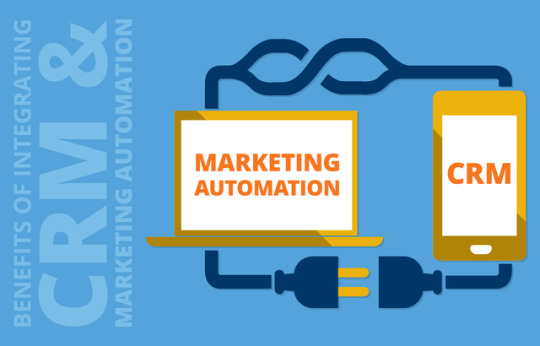
4 Benefits of Integrating Your CRM With Your Marketing Automation System Many companies have discovered that integrating customer relationship marketing platforms (CRM) with marketing automation systems can be harnessed to achieve the best possible relationships with customers. This article will review the four largest advantages businesses discover by integrating their CRM with automated marketing. Benefit #1: Improved Efficiency in Handling Customers Confused customers often come at a great cost: lost sales, reduced business, and diminished customer interest. Fortunately, one of the most commonly cited advantages of combining CRM with marketing automation is a reduction in confusion, and an increase in clarity. This clarity derives from the marketer’s newfound ability to deliver a precise and consistent message—one that also benefits from extra time gained from automation efficiencies, which allows teams to spend more time on establishing relationships. Marketing_Automation.png Slow customer service response times are another element that can result in a company losing customers. A study conducted in 2012 by Edison Research revealed that one in four consumers who contact a brand—on social media—to express a complaint [prefer a response within an hour or less]. Additionally, 42 percent of customers expect a response by a company to their message within one hour or less. Given these expectations, it is critical that companies respond to messages as quickly as possible. Fortunately, the integration of CRM with marketing automation systems allows companies to respond faster, increasing the quality of positive brand interactions. Benefit #2: Better Leads for Sales Teams Not all sales leads are the same. Many companies, however, make the mistake of confusing an increase in sales with a similar increase in quality sales leads. In actuality, studies often reveal that quality leads often only comprise a small portion of all leads. In an average of [61 percent of B2B marketers] who send leads to sales teams, only 27 percent of these leads qualified for a direct sales call. The danger of using lower quality sales leads? Companies risk spending precious sifting through low-quality leads. blog_image_2.png To avoid this waste, businesses should instead determine a firm-but-flexible construction of what constitutes a quality lead. Companies today distinguish leads in a variety of ways. Many look for demographics, firmographics, signs of intent, or sales cycles—often in combination with each other. Marketing automation that is integrated with CRM, however, improves lead quality by more easily and accurately defining which leads are most valuable. Using the data collected from marketing automation tools, companies can evaluate and grade leads to make sure that only the most promising are passed onto sales teams. Benefit #3: Companies Can Increase Focus on What Works Companies that are unable to make precise analyses of their businesses performance face an uphill battle in growing their company. After all, low confidence in obscure analytics makes it unclear as to what’s working, and what needs additional growth. CRM integrated marketing automation allows companies to better measure marketing successes and failures. Subsequently, companies are able to increase focus on growing the successful parts of their business. marketing_automation_benefits.png The integration of CRM and marketing automation systems allow companies to better identify the strongest departments and employees within their company. More accurate and available data makes it easier for businesses to identify the successes and reward departments and even particular employees for their efforts towards these advancements. In addition to being able to better determine what employees and departments have helped to grow a company, companies are better able to determine which marketing campaigns were most successful. Campaign ROI reporting in particular is is much easier when CRM is integrated with a marketing automation due to better communication between customer data reporting and campaign creation. HubSpot is just one of the services that allows companies to monitor these details in such a manner. Companies who use Hubspot are able to operate inbound marketing campaigns—including real-time sales alerts, lead scoring, and tracked marketing files—and monitor all of the financial details involved. And beyond the campaign level, integration revenue will always be attributed to the proper campaign and team who obtained these results. Benefit #4: More Information Can Be Gathered About Customers Modern marketing and sales departments focus on collecting as much information about consumers and their purchasing patterns as possible. This data is invaluable because it lets companies determine the best way to reach and convert prospects into customers. The greater the volume of customer data that companies can effectively process, the more targeted and strategic they can be in communications. Tools that are offered by marketing automation allow companies to capture even more data related to potential customers. This data includes: Volume of downloads Time spent on any given page How online visitors reach your site Which pages are most often visited Time of day site is most often visited By integrating this information with a CRM program, companies can provide a sales team with an even better understanding of how to relate to customers. This improved understanding is helpful because [Pardot’s 2013 State of Demand Generation] research reveals that 77 percent of consumers want different content targeted to them at each stage of the sales process. Because marketing automation systems provide companies with a better understanding of exactly what customers what, these systems serve as a sort of threshold between CRM and email marketing. Marketing automation systems provide CRM with invaluable. Companies can then use CRM to analyze this data and determine how to best use it to improve a business in a handful of ways including through email marketing. The advantage of this improved email marketing is that companies are able to create strong relationships with customers because interactions are more personal. Due to these stronger relationships, there is a greater likelihood of the company obtaining a closed sales, which means increased revenue. To Reach Your Business Potential, Integration is Critical The integration of CRM and marketing automation systems makes positive ripple effects through all elements of a company. Integration improves how a company markets its products and interacts with customer, which results in increased sales. Increased sales, of course, result in growth and an increased capacity to provide customers with more rewarding interactions. blog_image_5.png Many companies also discover that in addition to time gains from efficiency, automated systems also help prevent small errors from occurring in CRM systems, which can cause sales leads to become lost and resultantly reduce the size of a company’s sales base. These are just some of the benefits that individuals obtain through automated marketing and CRM. By integrating the programs, many companies discover a personalized touch that grows all aspects of their business. benefits_integrating_sales_marketing_automation
0 notes
Text
7 Tips to Improve Your Customer Relationship Management System
How do you improve your financial CRM? Statistics compiled by Forbes report that 72% of Chief Executive Officers say that they are focusing on improving both customer individualization and responsiveness to make sure that customers are content. As a result of this emphasis, a large number of companies are beginning to realize that customer relationship managements systems (CRMs) can be a very powerful asset. While CRMs were once little more than a detailed rolodex, today CRMs involve complicated software that can be used for online businesses. Many companies, however, have been left wondering exactly what can be done to improve their CRM. The ideal CRM should improve productivity at an affordable rate while also creating a stronger relationship with customers. This article will discuss the 7 steps that companies, in particular financial businesses can take to improve their customer relationship management system. Step # 1 - Specify Who Your Target Audience Is CRM can help you to identify who is interested in a specific financial product. Rather than rely on potentially incorrect assumptions about who buys what product, use definitive evidence gathered through your CRM to make such an analysis. Some of this data includes dislikes, likes, shopping history, or shopping patterns. Step # 2 - Synchronize Details It is critical that companies make sure that CRM is automatically in sync with all relevant employees’ calendars. This, however, that only type of synchronization that should occur. Each advisor should also make sure that their meetings and to-do lists are scheduled in CRM. The best CRM programs present individuals with the ability to synchronize between an Outlook email and Google calendar. Once you have determined who comprises your target audience, you can begin work on preparing really targeted marketing strategies and sales pitches. Information gathered from CRM can result in your business obtaining the maximum benefits from existing customers as well as identifying the best prospects, boosting sales and profits. Example: A company mistakenly believes that an attribute makes a group of customers inclined to buy a product. By using CRM, it is determined that a second element actually creates a likelihood to be interested in a product. As a result of using CMR in this case, the company is better able to focus on who the product’s target audience and can use this to drive sales across its existing customer base as well as to pursue the best fit prospects. Example: A CRM program does not sync to a smartphone or mobile device. Given that advisors are not always in the office and need to be able to sync on the go, the employer should consider using a different of CRM, which would greatly improve sales team efficiency. Download your guide to the Future of Wealth Management Step # 3 - Personalize Customize Service As Much As Possible CRM-personalization.png Target Marketing reports that 48 percent of customers spend more after personalized e-commerce efforts are taken. CRMs should be used to gain insight on what customers prefer. There are many successful ways in which companies have discovered that CRMs can be used to meet the unique goals of clients including sending email offers that are related to items previously purchased by a consumer. No matter how CRM is utilized, you should strive to observe customer touch points through multiple channels and understand the browsing history of customers in addition to key demographics. After recording this valuable information about what makes each customer or group of customers unique, you need to determine how to make a positive experience based on each customer’s unique needs: Following up on a customer’s experience and keeping track of important dates in the company’s relationship with the customer is one way of guaranteeing a positive experience There are a variety of programs that can be used to monitor this information including Close.io, Excel, Kovida.is, Microsoft Dynamics and Salesforce Financial Services Cloud. Example: A brokerage wants to begin marketing to consumers who have expressed interest in a financial product but not bought through the business before. The company uses CRM to determine who has expressed interest in a particular product, or can be identified as having those identifiers that make them a good candidate for conversion and then makes a special offer to these individuals. Step # 4 - Stay Up-To-Date One of the essential parts of improving the quality of database management is increasing the rate at which information is kept up-to-date. There are several reasons why keeping CRMs up-to-date is helpful. Individuals who are located on the frontline of your business gain security from up-to-date information because this information is a strong indicator of reliability. Many companies choose to make sure that information used by CRMs is up-to-date by using the cost effective and efficient method of asking customers if the information is still valid during direct contact. Other steps that you should follow to make sure that your customer and prospect information is up-to-date and accurate include cleaning data with updated firmographic variables, eliminating duplicate records, and making sure that emails addresses are kept clean. Additionally, by making sure that CRM information is kept as accurate and current as possible, your employees can increase the strength of your brand relationship with consumers. Example: A company frequently monitors results recorded in its CRM program to make sure that marketing is accurately sent to correct physical addresses. As a result of using the system in this way, ensuring data is accurate and clean an increased number of consumers receive marketing connected to a product and the business saves money. Step # 5 - Integrate the Customer Relationship Management System It is imperative that any relationship management system you use is integrated with other software programs that are used by your firm. The best CRMs integrate calendar programs, email, and marketing because they databases of communication information and should be an essential, mobile and easy to use part of any client interaction regardless of where this occurs: Face-to-face Over the phone By mail or email Online, including mobile The reason why integrated CRMs are better is that employees who interact with customers are able to easily access this information during any digital or physical interaction. Access to this information allows your staff to create a seamless, more personalized and empathetic relationship with a customer or client. In the best cases, integration of CRMs results in predictive marketing models, including predictive lead scoring thorugh the applicatiion of artificial intelligence. Considering these benefits, a system that cannot be integrated is likely to be less powerful than other CRMs and in fact will contribute to data and operational silos within your business. As a result, CRM should never thought of by a company as a standalone sales automation system or a program that is limited to sales. Example: A company integrates its systems throughout all aspects of its sales division. As a result, the advisors are able to anticipate how a product will sell before the product is even released into that market. Step # 6 - Effectively Train Your Team You should focus on training your employees on effective use of your integrated systems. One of the best ways to teach staff is to identify those individuals who have an in depth understanding of technology and those individuals who learn quickly. You should then schedule sessions to teach these employees first about how to make the most out of the CRM program. These sessions should make sure to discuss what elements the system is in addition to just being a database. Ensure everyone retains the salient points of training by providing strong reference material. This training should extend not only to sales people but also customer service employees, help desk employees, and other individuals who might interact with clients or deal with aspects of their account. Businesses who fail to effectively train employees about how to use a new system often fail in effective system application because there is a lack of expertise to make the program work. Example: A company teaches some of its customer service workers which results in the company being able to offer a more personalized and enjoyable experience to consumers. Step # 7 - Maximize Improvements Remember, there is always room for improvement. Listen for any notes about how to evolve the system from all involved employees. Because there are a large number of potential changes that will be proposed, it is important to prioritize changes that will improve strategy, tactics, and operations. Only pursue those changes that will 'make the boat go faster'. Example: A bank receives feedback from each of its workers, but chooses to focus first on the changes that would create significant impacts on its strategy of imprving cross-selling to existing customers. Both small and large financial organizations must face the challenge of gaining new customers but often more importantly building on existing customer relationships. By following these tips to properly emphasize not just the CRM program but its optimal application throughout sales and customer service and even back office functions, you can get the most out of your system.
0 notes
Text
How CRM Can Enhance Customer Loyalty For Insurance Companies
Customer relationship management (CRM) encompasses the strategies, methods and tools used to evaluate customer behavior and interactions to cultivate positive customer relationships. CRM is an essential tool for growing satisfaction that leads to repeat business and long-term customer loyalty. Successfully implementing a CRM system is practical necessity within the highly competitive insurance sector where a focus on technology helps even smaller firms. CRM personalization inspires positive customer experience Insurance is a very specialized product that relies on close customer interactions. CRM is an excellent method for increasing understanding on potential and existing customers, and thereby enabling the provision of unique services according to their individual situation. By starting this journey at the prospect stage, using CRM, insurance sales people can have a better picture of the customer’s requirements before they even contact them. CRM systems, like Salesforce Financial Services Cloud, provide the ability for marketing automation not only enabling insurance brokers to nurture leads into customers more efficiently but also to contact customers at the right time with the right advice or insurance product. A CRM process involves recording, analyzing, and interpreting data about preferences and behaviors, throughout the customer journey and starting even before the first purchase is made. This understanding is essential for boosting sales by ensuring that packages are suitable and offer the best cover for every customer. Continuous-improvement-customer-experience.png The Cycle Of Assessment Improving Customer Brand Experience Successful CRM is based on assessing and analyzing customer behavior with iteration along the way, this results in positive customer experience and responses that lead to repeat purchase and loyalty. CRM gives insurers the opportunity to leverage superior customer service In the increasingly competitive world of insurance, companies are looking for new ways to differentiate themselves from competitors to retain customers. CRM Enhances Customer Loyalty Insurance CTA.jpg One key way for insurance companies to maintain and improve customer loyalty is to offer superior customer service underpinned by CRM. Not only does this encourage repeat purchase by pre-existing customers, reducing customer churn and increasing lifetime value, but it also helps in acquiring new customers by improving word of mouth and prospect experience. CRM-for-customer-loyalty.jpg Insurance companies without CRM lack the insight required for crafting personalized sales and service interactions for large numbers of clients that CRM software can provide. Cloud-based CRM increases mobility, can be integrated with websites and linked to marketing, sales and support documents. The result is that staff and clients can connect regardless of their location, maximizing responsiveness and creating a more integrated service environment. In 2008, only 12% of companies used cloud-based CRM solutions. This figure had moved up to 87% by 2014. On-site-vs-cloud-crm-comparison.jpg CRM enables insurers to secure repeat business CRM integrates multiple facets of a business, it presents cost-effective method for connecting people and breaking down data silos, giving a single customer view. This provides insurance teams with the ability to cross and upsell more efficiently creating repeat sales to existing customers by keeping the needs of each at the center of marketing, sales and support communications. Financial-crm-insurance.png Overall Supporting personalized and efficient customer service and sales a CRM system gives insurance companies the opportunity to support customers throughout their lifetime, extending their journey with the company instead of simply providing services in the moment.
0 notes
Link
Wealth Management: The future of financial services is here. Clients today expect personalized outreach, proactive insights, and goal-based planning — delivered the moment they want it. Learn how to supercharge advisor productivity and create client relationships that last generations. Banking: Be the bank that customers love. Retail and commercial bankers can access rich customer profiles across all products and business lines. With smart insights, employees can identify new opportunities to engage prospects, convert more leads, and create customers for life. Insurance: Meet the evolving needs of every policyholder. Deliver outstanding service when customers need it most with omni-channel integration across social, web, email, and more — all in a single Salesforce instance.
0 notes
Text
The Importance of CRM in the Insurance Industry
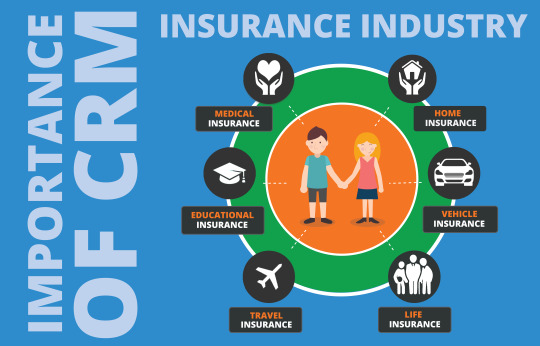
Digital innovation is essential in insurance
The need to keep up with technology is evident within the insurance industry where, according to PwC’s 2017 CEO Survey, insurers have expressed the need to innovate in order to remain competitive. To this end CRM systems deliver a number of benefits.
In the study, 54% of CEOs in the insurance industry indicated that technology has a significant impact on their competitiveness. Furthermore, 42% of insurance companies expressed concern with the speed of technological change and the impact that this will have on their business.
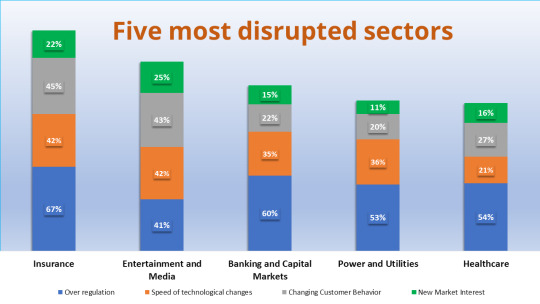
Of the top five areas to strengthen, CEOs identified digital and technological capabilities (28%) and improving customer experience (24%) as the two most important areas to focus on to achieve business growth. It is at the intersection of these two core areas that the fundamental importance of the implementation of a solid CRM finance solution for insurance brokers is evident.
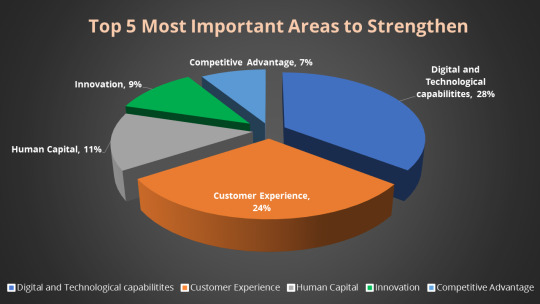
Source: http://www.pwc.com/gx/en/ceo-survey/2017/industries/pwc-ceo-20th-survey-report-2017-insurance.pdf
CRM is a Platform for Improved Customer Experience and Faster Claims Resolution
Consumers have become well-adapted to the convenience and the availability of communication channels like email, phone, chat, and social media that in effect have increased the expectations by policyholders in terms of customer service experience and prompt handling of claims.
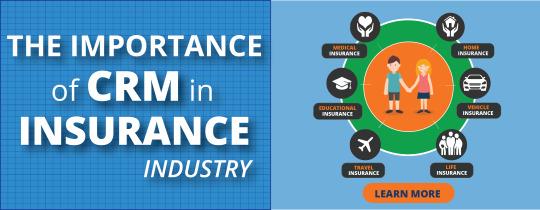
In addition to this, as can be seen in the diagram below 44% of insurance customers would switch if their preferred communication channels were not available during the claims process.
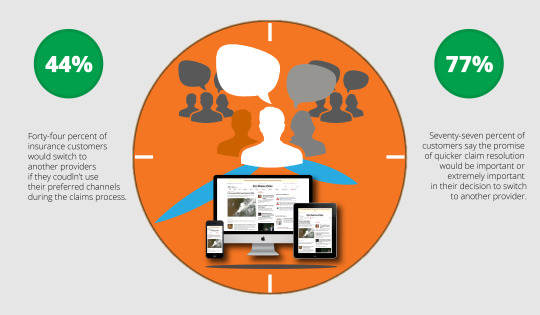
With one in two customers saying that they would not choose an insurance provider that did not provide communication across a number of channels including digital, CRM for insurance provides the connectivity and access to customer information required for great customer experience and fast claim resolution.
CRM as a channel for insurance consultation services
A CRM system can be a channel for information dissemination and collaboration between policyholders and advisors. According to Accenture, 80% of policyholders would switch insurers to get more personalized service.
Developing a one to one relationship between the advisor and customer is therefore essential in the insurance industry. The right CRM system which will enable brokers to develop and access a full picture of all of their clients, including their history and preferences in order to meet and even anticipate their needs is needed to achieve this.
The ability to engage with the insurer using preferred channels, from the customer’s perspective, is considered critically important and creates the necessity for insurance companies to offer digital, mobile access, something that is enabled by a cloud-based CRM platform.
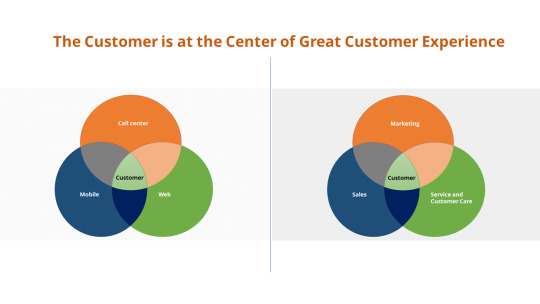
The 2016 U.S. Insurance Shopping Study by J.D. Power found that 74% of insurance consumers use online channels to research their purchase. This tells us that potential insurance buyers want to understand insurance products fully before opting to purchase them.
With product catalog, process workflow guides, and policy references available in CRM systems for insurance agents, barriers between insurance marketing, sales and client support are broken down, and closing deals has become easier.
Based on a case study on the success that can be achieved through insurance CRM software from Salesforce, using integrated sales records, marketing materials and tracking systems for 12 sales offices, Allianz Insurance was able to improve close rates by 17%.
0 notes
Text
Schneider Electric Revolutionized Its Customer Management With Salesforce
Schneider Electric quadrupled its solution-selling with Salesforce

The Challenge: With Salesforce Schneider Electric quickly rolled-out a single platform for all its customer data that overcame low adoption rates of past approaches:
The Solution:
· The Solution Within two years 30,000 employees in 70 countries were using Sales Cloud to increase sales and improve customer service
· 3 million customer account records were populated with 10 million interactions
The Result
Schneider Electric is a global specialist in energy management and automation. Its connective technologies, in use in around two thirds of the world’s buildings, are aimed at improving energy efficiency to enable energy saving and sharing.
Rapid organic growth and acquisitions left Schneider Electric with silos of customer data on disparate systems. It needed a single customer-centric solution accessible on mobile devices for its 120,000-workforce to enable customers achieve energy efficiency.
The company had been using Salesforce CRM since 2010 and knew it to be highly scalable, cloud-based, trusted and secure with an increasing number of tools to leverage this, adding:
· Service Cloud
· App Cloud along with more than 30 apps through App Exchange
· Community Cloud
Salesforce as a single-version of the truth revolutionized how Schneider Electric manage their customers:
· Connecting all its customers, staff and suppliers
· The global sales team has a 360-degree view of each customer
· Mobile technology from Salesforce means access for everyone from anywhere
· Employees collaborate across disciplines and geography
· Service Cloud enables 4,000 service agents to solve 10 million cases per year
· 43,000 Salesforce users and 400,000 partners work together through Community Cloud
Service capabilities, quality processes, digital channel management and partner management are all organized with Salesforce.
The single customer platform has led to improved customer experiences:
· Increased efficiency and increased customer satisfaction
· Data tools and fact-based analysis enables deeper understandingof customers over time
· Combined with product data this drives product and service innovation
As a result, solution sales have increased to 40% of its revenue compared to just 10% in 2009
Future-plans include:
· More apps to mine its data
· Harnessing the Internet of Things through its millions of connected devices, uploading data into the cloud for analysis to provide information and predictive intelligence
https://www.cetrixcloudservices.com/customer-success/
0 notes
Text
Amazon Web Services grows from a startup to a global leader with Salesforce
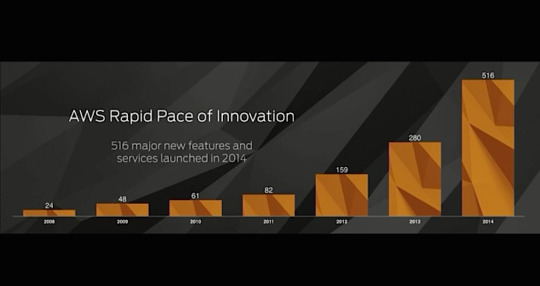
The Challenge: Salesforce provides AWS’ sales reps with a single, simple view of its customers and is available where and when they need it.
The Solution: The team are fed with the next steps in the customer journey plan to keep them on track with commitments:
The Result:
When Amazon Web Services (AWS) was launched in 2006 it was a small technology startup within a larger multinational.
It was not clear what direction AWS would take and so the team wanted a flexible, scalable software solution to take AWS where it wanted to go.
AWS knew that Salesforce was more than a CRM system but rather a ready to go platform on which to build the functionality they needed.
Using Sales Cloud, Community Cloud, Salesforce 1 App and Data.com AWS:
· Developed a ‘cloud journey plan’ for each customer
· Provided sales and operations teams with the information, tools and processes to achieve these
AWS also uses custom Apps for budget management and Communities for education.
· So that they can be responsive
· Adapt their approach to the customer’s stage in their purchasing journey
· Develop a stronger relationship with each customer
Data now works harder:
· Data.com and backend usage data provide better account insights
· Sales reps have more proactive conversations with customers
With Salesforce AWS keeps its customer at the center of its operations:
· Exceeding expectations by using information to be proactive rather than reactive
· Using the propensity-to-buy model to anticipate and meet customer’s upcoming needs
· Keeping its promise to be customer obsessed
AWS has integrated other tools and processes with the single platform:
· Deal approvals
· Contracts
· Marketing budgets
Are now all managed with Salesforce.
· Leads go straight to the right sales reps
· Repeatable consistent sales processes ensure consistent quality and increased productivity for new staff
· By including channel sales into planning AWS can see how its partners are adding to its growth in different parts of the world.
Salesforce scalability means that it has grown with the business and team:
· Tools and systems have moved as fast as AWS needed them to
· To connect millions of customers and partners in 190 countries
How Amazon Web Services grows from a startup to a GLOBAL leader with Salesforce
When Amazon Web Services (AWS) was launched in 2006 it was a small technology startup within a larger multinational.
AWS knew that Salesforce was more than a CRM system but rather a ready to go platform on which to build the functionality they needed.
Using Sales Cloud, Community Cloud, Salesforce 1 App and Data.com AWS:
• Developed a ‘cloud journey plan’ for each customer
• Provided sales and operations teams with the information, tools and processes to achieve these
https://www.cetrixcloudservices.com/customer-success/amazon-web-services-grows-from-a-startup-to-a-global-leader-with-salesforce
#customersupport #customerservice
0 notes
Text
With Desk.Com Asana Can Deliver What Customers Really Want
Using Desk.com has enabled Asana to provide customer-centric support and product enhancements.

Asana builds software that empowers teams, including those from brands like Uber, Dropbox and Pinterest, to work together to achieve amazing things. Its easy-to-use platform is simple yet powerful enough to organize teams to complete projects efficiently and with excellent outcomes.
Customer focus is important for Asana which recognizes that to differentiate itself in a busy marketplace its customer services team needs to offer exceptional experiences and a product that is built around customer need. To do this they need access to information.
As the company grew,the head of customer support at Asana was concerned that the team might be limited by traditional technologies and was looking for a customer support software to ensure customer focus was maintained.
In its search for the right product Asana found Desk.com for customer support, which turned out to be exactly what the team was looking for. The Desk.com app makes it easy to communicate via email, Web, Twitter and Facebook, all in one place.
This easy to use and flexible tool enables an employee to get up and running within minutes, making it easy to scale for expansion across a team working with customers.
Desk.com customer support software has enabled Asana’s customer support team to deliver outstanding experiences as part of its integrated and streamlined project collaboration product.
Using Desk.com from Salesforce Asana’s customer support employees are:
· More efficient, even in times of rapid growth
· More focused on their customers
· Able to alter workflow rules quickly in response to volume or business process changes
· More responsive to customer needs.
With Salesforce Asana has increased transparency into every piece of customer feedback:
· The customer support team cansee and track all feedback from customers and report on customer issues and trends at company meetings
· Enhanced insight means they now partner with the product management team to improve existing product features or add new ones
This ability to share information and understand the customer means that Asana can deliver what its customers really want. Its ability to deliver consistent excellence in its customer experiences has improved with Desk.com.
“Get More For Less With Cetrix Integrated Automation”
0 notes
Text
The Battle for Better- Desk.com VS Supportbench

The battle for Better- Desk.com VS Supportbench
Online business is booming and there is no doubt that it has given rise to fierce competition. Everyone wants their business to take over the competitor’s. So in this era of fierce competition, large companies can gain advantages over others by providing exceptional services like customer support service. This service can help them grab the attention of new clients and also to retain the old clients.
There are 2 major companies that are offering customer support services. These include Desk.com and SupportBench.
Desk.com vs. SupportBench

Desk.com
Formerly known as Assistify and then the merger happened and it was owned by Salesforce in 2011. It targets small scale business companies. Provides the customer support service software that is present in over 50 languages.
It helps the customers to easily locate, save and recover the information. It lacks the ability via which the agents can deeply investigate the setup. The dashboard is plain and simple but it doesn’t provide much options to its client’s when compared to the supportbench.
· Price
They charge monthly and consist of a base cost for each agent that uses this software. The price structure starts from 25 dollars and rises up to 75 dollars. The pro level software costs around 125 dollars per month.
· Onboarding and setup
The setup for this software starts with a simple tour guide that explains everything stepwise. They simply work by bringing more agents so that they can login and get the training.
SupportBench
It was founded in 2016 in Vancouver. Due to exceptional customer support services it has gained popularity among the clients in less than a year. It targets both small and large scale companies.
It provides in-depth detail about the setup. Every information is made available upon a single click that includes calendars, audit logs, task management and interactions. The layout is made simple and even a lot of information will be present on a single window but it will be easily readable and will be differentiated easily.
· Price
The standard rate for this software is 20 dollars and it solely depends upon the number of agents that are using this software. This software is pricey when compared to the desk.com. As it will charge around 300$ for 15 agents while desk.com will charge only 185$ for same number of agents.
· Onboarding and setup
Supportbench provide online guru that provides customer support service.These gurus help the agents from data transfer to customization. The gurus provide in-depth detail about the setup.
0 notes
Text
Customer Facilitation by Using Management Software
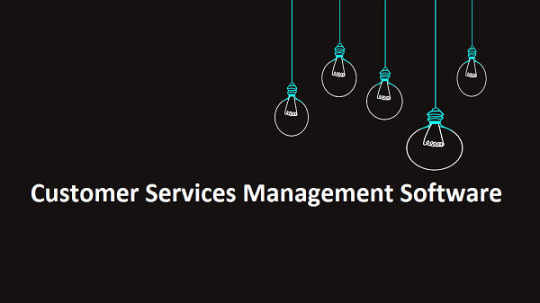
With the increasing use of technology, the companies are forced to upgrade their process by incorporating all the latest techniques of technology. By doing this they will not only make good relation with the customers but their business will boost too. For this purpose many developments have been made in the customer service sector and one of the developments is the use of ‘customer service management software’.
Importance of Customer Management Software
Selecting the customer management software that facilitates the customer on first come first serve basis helps the company to earn the trust of clients in short time span. Customers always rely on companies that provide good and efficient services and never wants to develop a relation with such ventures which provides poor services to the clients.
Acquiring the new customers is much difficult than maintaining the old client. As it requires planning, huge investments and time. For this purpose the software’s the designs.

The Customer Service Providing Options
You often come across numerous helpdesk option that facilitates the customers by offering online chat service. The customers can on spot ask queries and the facilitators will help them right away.
· Supportbench
All the companies look for easy and fast software setup that is affordable as well. There are 2 companies that offer 2 different types of customer service management software. Support bench facilitates the customers through on-boarding gurus. These help the customers on each step. From data migration to user registration these on boarding gurus will provide help on every step. This upgrades its base solution with custom built integrations. It does not support any addition of any new app rather it provides full-scale integration.
· Desk.com
On the other hand, the desk.com uses a conventional approach that is self-guided tour. Which explains every bit to the clients that they need to know from signing in to navigating the site within minutes. Desk.com upgrades the base solution by using Add-On- HUB. It can be upgraded simply following few simple steps, to have brand new set of functions.
Salesforce as CRM
Clients which are using the salesforce as their CRM they can incorporate the CM with the customer service management software. By doing so, the time is saved while transferring the massive information that is kept in the salesforce to the client’s dashboard. Not only time but this method is less expensive and the customers gets much better experience this way.
Desk.com has been made enough customized and user friendly that enables user to transport secret cum important data to back-end data center servers from salesforce. This step is somehow a bit cumbersome for systems but once it is completed it makes the any type of data just at a click away. Supportbench has got feather in cap by having ‘one-pane one-click’ system but desk.com is also not lagging behind by presenting multiple easy-to-fetch data options.
0 notes
Text
Top Customer Services Channels and Systems
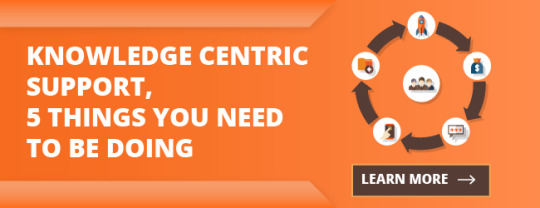
“It takes months to find a customer and seconds to lose one”. Customer services experts can understand deeply about the reliability of this quotation. It is cent percent true that finding customers is not an easy task and good service makes them words of mouth marketing for company so setting customer service as priority makes the other units of business work smoothly. SaaS business is itself revolves around the streamlined service provisioning so providing great support to prospects and existing customers is beholden to recommended ‘customer service system’.
SaaS developers and distributors rely on availability of multiple options in system as per scenarios and requirements of delivery at time.
Let’s discuss about major differentiators of Customer Support for SaaS businesses.
SaaS Business is Customer Service at First.
Days are gone when directors and management of companies rarely had attentions towards better facilities for customer because post-failures analyses revealed that bad feedback from customers have drowned the company so such stories made the managements of businesses conscious about true support to users of service/product. SaaS is application or software as demanded by clients so getting in touch with them with zero barrier is only way to make customized app or software. SaaS apps or softwares are mostly based on gamification, accounting process tool, CRM, invoicing or any type business operations tool. SaaS developer managers are to keep continuous contact with clients so better service that may automated routing of request tickets to relevant units and status visibility of tickets at each level is mandatory in order to make client satisfied with service and product ordered.
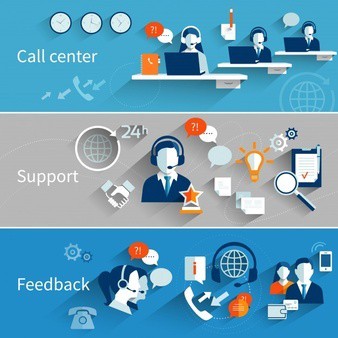
A few Support Touch Points Deliver Best
Best service delivery at omni channels is not possible because contacting customer at every point of business branch can throw unparallel facilities to customers unless SOPs of every scenario are defined and taught to staff. Going through this step may cause cumbersome milestones. Recommended way to serve customers are live chat, email and 24/7 helpline support.
After establishing first class and centralized contact center, there should be manageable content management system that may route the tickets to defined units of organization and which must have fixed turnaround time as well.
Service at Few Clicks
Customers looking for some solutions go to Google and want to get answer just at some clicks, so service provider must concentrate at user friendly website and SEO of it. It is just because of competition at online world, search engine optimized content and key words optimization is surely a technical and research based task initially but once it is done it results profitable time in future. On the other end of spectrum, FAQs and built in search engine at website gives easy access to question of customers. Moreover, self interacted IVR at helpline and community discussion at website allows customers to explore more in less time.
Mobile Solutions at First
Desktop solutions have been replaced with mobile solutions now. Customers look for help while travelling so mobile solutions are preferred now. Customer support management must roll out live chat support access through smartphones, mobile app other means accessible via smartphones.
Online Feedback Matters
Gathering feedback about help at live chat, helpline and website is of momentous and worthwhile values for analyses. Best customer service system like supportbench gathers and present customized feedback of customers in form of ways management likes.
Identify the Internal Issues of Company
Provisioning of customer support with aligned measures requires continuous diagnosis of internal web systems, ticketing systems and helpline routers, this task is of utmost in order to avoid predicament circumstances at uncertain time. Last ditch effort can be useless in case sophisticated system like salesforce is not made ready for it. Moreover, backup of data at secured servers is possible by installing supportbench as best customer service system.
0 notes
